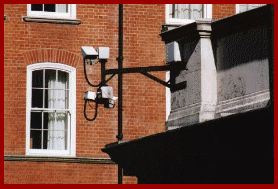| |||||||||||||||||||||||||||||
Welcome to the | |||||||||||||||||||||||||||||
 | |||||||||||||||||||||||||||||
 | |||||||||||||||||||||||||||||
If the images are required to be reviewed in real time, perhaps by a senior security officer, or a number of members of a surveillance team, then there is absolutely no alternative but to transmit the pictures to additional locations. Before getting too far into the subject of wireless transmission, it’s important to mention that the vast majority of covert operations still use good old fashioned ‘copper’ to relay the video signals. Co-axial cables such as RG 59B/U (preferred), URM 70, CT 100 etc., are all perfectly capable of transmitting very high quality images over reasonable distances, and with minimal fuss. Existing fibre optic cable could also be utilised if there is spare capacity, but again it’s not something that would normally be considered unless it was already available. All of these techniques exhibit varying degrees of signal Network transmission (IP Video) is becoming increasingly popular in some quarters for everyday work, but again for highly sensitive covert operations, it is unlikely to be top of the list of Doktor Jons favourite options. Wireless transmission is a thoroughly useful technique which can offer at least a couple of glaringly obvious advantages. Using a miniature camera / transmitter combination, it’s quite easy to literally walk into any given environment and ‘plonk’ the camera down in the most appropriate position. Picture quality should be reasonably good (provided the transmitter and receiver aerials are correctly aligned) and some of the smaller low power transmitters do not require buckets of energy cells, simply to operate over a short time period - be aware though that due to operational restrictions on available frequencies, there is always a risk that a transmitted picture could cause problems with other equipment working on similar frequencies, and indeed could quite easily be picked up by someone using a correctly tuned set of receiving equipment.
| |||||||||||||||||||||||||||||
 | |||||||||||||||||||||||||||||
IMPORTANT: No material may be reproduced, copied or redistributed from this site, © doktorjon.co.uk 2004 - 2008 Homepage...:...Gateway...:...Technical Gateway....:....Quickfind Index....:....Equipment Directory | |||||||||||||||||||||||||||||

